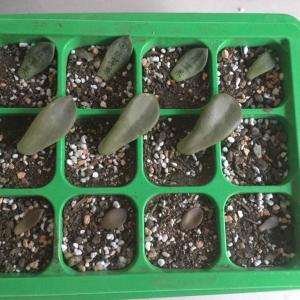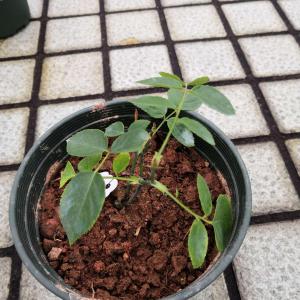文章
Miss Chen
2018年02月06日

Description: This perennial orchid is 1-2½' tall and unbranched. The central stem is light green, terete, glabrous, and somewhat stout. There are 2-5 alternate leaves along each stem, developing from sheaths. They are 2-8" long and ½–2" across, becoming smaller as they ascend the central stem. The light to medium green leaf blades are elliptic, elliptic-oblong, or lanceolate-oblong in shape and smooth along their margins; their veins are parallel. In relation to the stem, the leaf blades are nearly erect and slightly spreading. The central stem terminates in a narrow raceme flowers about 3-8" long. The whitish or yellowish green flowers are arranged all around the central stalk of the raceme on ascending stout pedicels about 1" long. At the base of each pedicel, there is a linear-lanceolate bract about ¾" long.
Raceme of Flowers
Each flower is about ¾" long and across, consisting of 3 petals, 3 sepals, a nectar spur, and reproductive organs. The upper sepal and upper 2 petals (about ¼" long) form a small hood (upper lip) over the reproductive organs and nectary opening. The upper sepal is broadly oblong in shape, while the upper 2 petals are linear to linear-oblong. The 2 lateral sepals (about ¼" long) are broadly oblong and usually curve backward from the front of the flower. The lower petal forms a lower lip that is deeply divided into 3 fan-shaped lobes. The lateral lobes and usually the central lobe are deeply fringed; less often, the central lobe is shallowly divided into 2-3 smaller lobes. The fringed lower lip may be more white than other parts of the flower. At the back of the flower, there is a narrowly cylindrical nectar spur about ¾" long that nods downward. The blooming period occurs during mid-summer and lasts about 3 weeks. The flowers are often fragrant, especially at night. Fertile flowers are replaced by narrowly ellipsoid seed capsules about ¾" long. The seed capsules split open to release numerous tiny seeds, which are distributed by the wind. The root system consists of fleshy fibrous roots. Sometimes, vegetative offsets develop a short distance from the mother plant.
Cultivation: The preference is full or partial sun, moist conditions, and an acidic soil containing sand, silt-loam, peaty material, or some gravel. Like other orchids, this species requires the appropriate endomycorrhizal fungus in the soil for proper growth and development. It can be difficult to transplant successfully.
Range & Habitat: The native Green-Fringed Orchid has been found in most areas of Illinois, particularly the NE section of the state; it is relatively uncommon. Habitats include moist prairies and sand prairies, sandy swamps, moist open woodlands, shrubby bogs, acidic gravelly seeps, low areas along streams, sandy fields, powerline clearances, and ditches. Green-Fringed Orchid is more likely to appear in degraded areas than many other orchids, although it also occurs in higher quality habitats.
Faunal Associations: The flowers are pollinated primarily by moths, including Noctuid moths and Sphinx moths. Such species as Anagrapha falcifera (Celery Looper Moth), Allagrapha aerea (Unspotted Looper Moth), and Hemaris thysbe (Hummingbird Clearwing) have been observed sucking nectar from the flowers. Mammalian herbivores (deer, rabbits, cattle, etc.) sometimes enjoy a gourmet meal by browsing on the foliage and flowers of this and other terrestrial orchids.
Photographic Location: A prairie in Fayette County, Illinois. The photograph of the flowering plant was taken by Keith & Patty Horn (Copyright © 2009).
Comments: Because of its greenish flowers, this orchid doesn't stand out from the background to the same extent as more colorful orchids in its genus. However, it has a delicate beauty that is peculiarly its own. While there are many orchids in the Midwest that have greenish flowers, this orchid is the only one with a deeply fringed lower lip. Compared to the similar Platanthera leucophaea (Prairie White-Fringed Orchid), the Green-Fringed Orchid has a lower lip with more narrow and insubstantial lobes (this applies particularly to the central lobe). Other species in this genus, e.g. Platanthera blephariglottis (White-Fringed Orchid) and Platanthera ciliaris (Orange-Fringed Orchid), have fringed lower lips that are not divided into major lobes. Thus, not only color, but also subtle differences in floral structure, are important in the identification of an orchid species in this interesting genus.
Raceme of Flowers
Each flower is about ¾" long and across, consisting of 3 petals, 3 sepals, a nectar spur, and reproductive organs. The upper sepal and upper 2 petals (about ¼" long) form a small hood (upper lip) over the reproductive organs and nectary opening. The upper sepal is broadly oblong in shape, while the upper 2 petals are linear to linear-oblong. The 2 lateral sepals (about ¼" long) are broadly oblong and usually curve backward from the front of the flower. The lower petal forms a lower lip that is deeply divided into 3 fan-shaped lobes. The lateral lobes and usually the central lobe are deeply fringed; less often, the central lobe is shallowly divided into 2-3 smaller lobes. The fringed lower lip may be more white than other parts of the flower. At the back of the flower, there is a narrowly cylindrical nectar spur about ¾" long that nods downward. The blooming period occurs during mid-summer and lasts about 3 weeks. The flowers are often fragrant, especially at night. Fertile flowers are replaced by narrowly ellipsoid seed capsules about ¾" long. The seed capsules split open to release numerous tiny seeds, which are distributed by the wind. The root system consists of fleshy fibrous roots. Sometimes, vegetative offsets develop a short distance from the mother plant.
Cultivation: The preference is full or partial sun, moist conditions, and an acidic soil containing sand, silt-loam, peaty material, or some gravel. Like other orchids, this species requires the appropriate endomycorrhizal fungus in the soil for proper growth and development. It can be difficult to transplant successfully.
Range & Habitat: The native Green-Fringed Orchid has been found in most areas of Illinois, particularly the NE section of the state; it is relatively uncommon. Habitats include moist prairies and sand prairies, sandy swamps, moist open woodlands, shrubby bogs, acidic gravelly seeps, low areas along streams, sandy fields, powerline clearances, and ditches. Green-Fringed Orchid is more likely to appear in degraded areas than many other orchids, although it also occurs in higher quality habitats.
Faunal Associations: The flowers are pollinated primarily by moths, including Noctuid moths and Sphinx moths. Such species as Anagrapha falcifera (Celery Looper Moth), Allagrapha aerea (Unspotted Looper Moth), and Hemaris thysbe (Hummingbird Clearwing) have been observed sucking nectar from the flowers. Mammalian herbivores (deer, rabbits, cattle, etc.) sometimes enjoy a gourmet meal by browsing on the foliage and flowers of this and other terrestrial orchids.
Photographic Location: A prairie in Fayette County, Illinois. The photograph of the flowering plant was taken by Keith & Patty Horn (Copyright © 2009).
Comments: Because of its greenish flowers, this orchid doesn't stand out from the background to the same extent as more colorful orchids in its genus. However, it has a delicate beauty that is peculiarly its own. While there are many orchids in the Midwest that have greenish flowers, this orchid is the only one with a deeply fringed lower lip. Compared to the similar Platanthera leucophaea (Prairie White-Fringed Orchid), the Green-Fringed Orchid has a lower lip with more narrow and insubstantial lobes (this applies particularly to the central lobe). Other species in this genus, e.g. Platanthera blephariglottis (White-Fringed Orchid) and Platanthera ciliaris (Orange-Fringed Orchid), have fringed lower lips that are not divided into major lobes. Thus, not only color, but also subtle differences in floral structure, are important in the identification of an orchid species in this interesting genus.
0
0
文章
Miss Chen
2018年02月06日

Description: This herbaceous perennial plant is up to 4' tall and unbranched, except near the inflorescence. The central stem is strongly four-angled and hairless. The opposite leaves are up to 5" long and 1½" across. They are sessile, hairless, lanceolate or oblanceolate, and have sharply-pointed widely-spaced teeth along the margins. The inflorescence consists of tall spikes of flowers at the ends of the upper stems. A spike is up to 10" long and consists of 4 rows of densely packed horizontal flowers or their buds. The tubular flowers are white, lavender, or purplish pink, and they often have dots, fine stripes, or swirls of a slightly darker color. Each flower is about 1" long, has 2 lips, while 4 purple anthers are visible near the upper lip. This upper lip is a broad hood, while the lower lip is divided into 3 lobes – the larger central one functioning as a landing pad for insects, which is accompanied by 2 smaller side lobes. The flowers have no scent.
The blooming period occurs during late summer to early fall, and lasts about 1½ months. Each flower produces 4 sharply angled, dull brown seeds. The root system consists of a central taproot and rhizomes. The latter promote the spread of this plant vegetatively.
Cultivation: The preference is full or partial sun, and moist to average conditions. Growth is best in rich loamy soil, but it can contain some gravel or clay. During droughts, the lower leaves may turn yellow and fall off the stem. Otherwise, the foliage has fewer problems than most mints. This plant is easy to grow if the site is not too dry. At moist sites, it sometimes spreads aggressively.

Range & Habitat: The native Obedient Plant occurs occasionally in scattered counties throughout Illinois (see Distribution Map). It is less common in the western and southern portions of the state. Habitats include moist to mesic black soil prairies, thickets, openings in woodland areas and along woodland borders, moist meadows along rivers and borders of lakes, seeps, limestone glades, and open moist areas near railroads.
Faunal Associations: Bumblebees are the most important pollinators of the flowers. Occasionally, other long-tongued bees and the Ruby-Throated Hummingbird may visit the flowers. These visitors seek nectar from the flowers. Like other members of the Mint family, the Obedient Plant is probably not a favored source of food for mammalian herbivores.

Photographic Location: The photographs were taken at a prairie of Meadowbrook Park in Urbana, Illinois, and at the Loda Cemetery Prairie in Iroquois County, Illinois.
Comments: This plant is often grown in flower gardens, and some populations may represent escaped plants from cultivation. Usually, the horticultural forms are more rosy pink or purple in appearance than native wild populations, which are usually white with light pink or purple tints. Because the individual flowers stay in place when moved, one common name is 'Obedient Plant,' as used here. Another name is 'False Dragonhead' on account of the fancied resemblance to a European plant by that name. While this is a pretty plant, its ecological value to birds, mammals, and insects is fairly low.
The blooming period occurs during late summer to early fall, and lasts about 1½ months. Each flower produces 4 sharply angled, dull brown seeds. The root system consists of a central taproot and rhizomes. The latter promote the spread of this plant vegetatively.
Cultivation: The preference is full or partial sun, and moist to average conditions. Growth is best in rich loamy soil, but it can contain some gravel or clay. During droughts, the lower leaves may turn yellow and fall off the stem. Otherwise, the foliage has fewer problems than most mints. This plant is easy to grow if the site is not too dry. At moist sites, it sometimes spreads aggressively.

Range & Habitat: The native Obedient Plant occurs occasionally in scattered counties throughout Illinois (see Distribution Map). It is less common in the western and southern portions of the state. Habitats include moist to mesic black soil prairies, thickets, openings in woodland areas and along woodland borders, moist meadows along rivers and borders of lakes, seeps, limestone glades, and open moist areas near railroads.
Faunal Associations: Bumblebees are the most important pollinators of the flowers. Occasionally, other long-tongued bees and the Ruby-Throated Hummingbird may visit the flowers. These visitors seek nectar from the flowers. Like other members of the Mint family, the Obedient Plant is probably not a favored source of food for mammalian herbivores.

Photographic Location: The photographs were taken at a prairie of Meadowbrook Park in Urbana, Illinois, and at the Loda Cemetery Prairie in Iroquois County, Illinois.
Comments: This plant is often grown in flower gardens, and some populations may represent escaped plants from cultivation. Usually, the horticultural forms are more rosy pink or purple in appearance than native wild populations, which are usually white with light pink or purple tints. Because the individual flowers stay in place when moved, one common name is 'Obedient Plant,' as used here. Another name is 'False Dragonhead' on account of the fancied resemblance to a European plant by that name. While this is a pretty plant, its ecological value to birds, mammals, and insects is fairly low.
0
0
文章
Miss Chen
2018年02月04日

Description: This perennial plant is 2-3' tall, forming one or more unbranched flowering stalks. The central stem is light green, glabrous, and terete. Pairs of opposite leaves develop along the lower half of this stem; they are up to 5" long and 2" across, deltate-ovate to oblong-lanceolate in shape, and smooth to slightly toothed along their margins. Between the leaves on the lower stem and the inflorescence, the central stem is usually naked; sometimes pairs of small narrow leaves (1" long or less) can be found along the upper stem that resemble bracts. The upper surface of the leaves is medium to dark green and glabrous, while the lower surface is pale green and glabrous.
Two Plants in Bloom
The inflorescence consists of a cylindrical panicle of flowers about ½-1½' in length. Within this inflorescence, the flowers are clustered together at intervals in pseudo-whorls (about 6-12 flowers per pseudo-whorl). Individual flowers are about ¾-1" long and across, consisting of a funnel-shaped white corolla that flares outward into 5 rounded lobes, a small green calyx with 5 ovate teeth, 5 stamens (one of them sterile), and a pistil with a single style. Tiny glandular hairs occur along the outside and inside of the corolla. The peduncles and pedicels of the flowers are either glabrous or glandular-hairy. The blooming period occurs from late spring to early summer and lasts about 3 weeks. The flowers are replaced by ovoid seed capsules about 1/3" long; the latter eventually split open to release numerous small seeds. The root system consists of a crown with fibrous roots. Low basal leaves are usually present during winter dormancy.
Cultivation: The preference is full or partial sun, mesic to dry conditions, and loamy or rocky soil. Well-drained conditions are required to prevent root rot.

Range & Habitat: Trumpet Penstemon is uncommon in southern Illinois, and rare or absent in the rest of the state (see Distribution Map). Illinois lies near the northeast range-limit of this species. Habitats include meadows and openings in upland woodlands, oak savannas, thinly wooded bluffs, prairies, limestone glades, and prairie remnants along railroads.
Faunal Associations: The nectar and pollen of the flowers attract long-tongued bees primarily: bumblebees, Anthophorine bees (Anthophora spp.), a Mason bee (Osmia distincta), and a wasp (Pseudomasaris occidentalis). The last two insects are oligoleges of Penstemon spp. (Penstemons). Other floral visitors include Green Metallic bees (collect pollen only) Swallowtail butterflies (suck nectar only), and the Ruby-Throated Hummingbird (suck nectar only). Moth caterpillars that feed on Penstemons include Elaphria chalcedonia (Chalcedony Midget), Oncocnemis saudersiana (Saunder's Oncocnemis), and Pyrrhia exprimens (Purple-Lined Sallow). Mammalian herbivores apparently make little use of the foliage as a food source.

Photographic Location: A prairie in Fayette County, Illinois. The photographs were taken by Keith & Patty Horn (Copyright © 2010).
Comments: Trumpet Penstemon is an elegant wildflower with an unusually long and slender inflorescence. In addition to these characteristics of its inflorescence, it differs from other Penstemon spp. (Penstemons) by the shape of its flowers (narrow and funnel-shaped at the base, rather than swollen), the large size and similarity of its corolla lobes, the lack of conspicuous leaves between the inflorescence and the leaves of the lower stem, the presence of tiny glandular hairs within its corolla, and the lack of hairs on its leaves and central stalk. Sometimes the scientific name of this species is spelled Penstemon tubiflorus (see Britton & Brown, 1913/1970).
Two Plants in Bloom
The inflorescence consists of a cylindrical panicle of flowers about ½-1½' in length. Within this inflorescence, the flowers are clustered together at intervals in pseudo-whorls (about 6-12 flowers per pseudo-whorl). Individual flowers are about ¾-1" long and across, consisting of a funnel-shaped white corolla that flares outward into 5 rounded lobes, a small green calyx with 5 ovate teeth, 5 stamens (one of them sterile), and a pistil with a single style. Tiny glandular hairs occur along the outside and inside of the corolla. The peduncles and pedicels of the flowers are either glabrous or glandular-hairy. The blooming period occurs from late spring to early summer and lasts about 3 weeks. The flowers are replaced by ovoid seed capsules about 1/3" long; the latter eventually split open to release numerous small seeds. The root system consists of a crown with fibrous roots. Low basal leaves are usually present during winter dormancy.
Cultivation: The preference is full or partial sun, mesic to dry conditions, and loamy or rocky soil. Well-drained conditions are required to prevent root rot.

Range & Habitat: Trumpet Penstemon is uncommon in southern Illinois, and rare or absent in the rest of the state (see Distribution Map). Illinois lies near the northeast range-limit of this species. Habitats include meadows and openings in upland woodlands, oak savannas, thinly wooded bluffs, prairies, limestone glades, and prairie remnants along railroads.
Faunal Associations: The nectar and pollen of the flowers attract long-tongued bees primarily: bumblebees, Anthophorine bees (Anthophora spp.), a Mason bee (Osmia distincta), and a wasp (Pseudomasaris occidentalis). The last two insects are oligoleges of Penstemon spp. (Penstemons). Other floral visitors include Green Metallic bees (collect pollen only) Swallowtail butterflies (suck nectar only), and the Ruby-Throated Hummingbird (suck nectar only). Moth caterpillars that feed on Penstemons include Elaphria chalcedonia (Chalcedony Midget), Oncocnemis saudersiana (Saunder's Oncocnemis), and Pyrrhia exprimens (Purple-Lined Sallow). Mammalian herbivores apparently make little use of the foliage as a food source.

Photographic Location: A prairie in Fayette County, Illinois. The photographs were taken by Keith & Patty Horn (Copyright © 2010).
Comments: Trumpet Penstemon is an elegant wildflower with an unusually long and slender inflorescence. In addition to these characteristics of its inflorescence, it differs from other Penstemon spp. (Penstemons) by the shape of its flowers (narrow and funnel-shaped at the base, rather than swollen), the large size and similarity of its corolla lobes, the lack of conspicuous leaves between the inflorescence and the leaves of the lower stem, the presence of tiny glandular hairs within its corolla, and the lack of hairs on its leaves and central stalk. Sometimes the scientific name of this species is spelled Penstemon tubiflorus (see Britton & Brown, 1913/1970).
0
0
文章
权问薇
2018年02月04日


一、施肥的时间
众所周知,在每年九月到次年4到5月的这段时间,就是它的生长期,这时候肯定需要的肥量是很多的,所以这时候我们在施肥的时候,可以适当的多给它施加一点,从而给它提供充足的营养,让它更好的生长。
但是等过了中秋之后,这时候温度慢慢降了下来,如果要施肥的话就不能那么随心所欲了,我们为了让它能够平安的迎接冬天并顺利越冬,就必须要停止施加任何肥料了,以防给它带来肥。因为这时候温度很低,施肥太多会容易伤到它的根。
然后等到了春天就可以正常施肥了,另外到了夏天也要注意,尤其是高温时,施肥也是要适当减少的,以防高温给根带来伤害。

二、肥料的选择
在刚开始栽培它的时候,我们应该在基质中加入一些复合肥,以满足它前期所需,然后等到了生长期之后,每个月可以给它施加一次稀薄的液态肥料。接着等到了秋天之后,就可以追施一点磷酸二氢钾,浓度要掌握好,就这样施加个2到3次,便可以让它叶片更加硬化和充实。
之后在每年给钱串换盆的时候,我们可以在它的盆底加入一下长效基肥,这样就可以长时间的给它提供营养。
然后在平时养护时,还需施加少量的复合肥,这种肥料的肥效非常快,使用也很方便,而且在施加之后会让养分更多,但是要注意的是,施加的量要合理一点。

三、其他的注意事项
在平时施肥的时候,一定要注意不能让肥料撒到叶子上面,或者直接埋到根上,不然就会让叶子黄化、根系腐烂,严重的时候还会让整个植株死掉。
所以在施肥时,一旦发现肥料撒在叶子上,就要及时的给它抖落掉,或者是擦掉,对于根也是,在施肥时,尽可能让肥料离根远一点。

0
1
文章
Miss Chen
2018年02月03日

Description: This is a short-lived perennial plant that forms a basal rosette during its first year, after which it produces one or more flowering stalks about 1-3½' tall from a thick rootstock. The basal leaves (2-5" long and 1-3" across) are pale grayish green or bluish green, ovate to obovate in shape, smooth along their margins, and glabrous, tapering either gradually or abruptly into petioles. They have a rather succulent texture. The stems of flowering plants are whitish green to pale red, terete (circular in cross-section), glabrous, and somewhat glaucous. The leaves along these stems are arranged oppositely; they are 2-4" in length and 1-2½" across. These latter leaves are pale grayish green to bluish green, ovate to ovate-cordate in shape, smooth along their margins, and glabrous; their tips are blunt. The leaves of each lower stem are sessile, while the smaller upper leaves often clasp the stem. Like the basal leaves, the opposite leaves have a rather succulent texture. From the axils of opposite leafy bracts (up to 1¼" long and ¾" across), there develops pairs of 1-3 flowers on short slender pedicels, forming a narrow raceme about ½-1½' long. Each flower has a pinkish lavender corolla up to 2" long, a pale grayish green or bluish green calyx with 5 teeth, a pistil with a single white style, and 5 stamens. The corolla is tubular-trumpet shaped and slightly flattened; it has an upper lip with two rounded lobes and a lower lip with 3 rounded lobes. Within the throat of the corolla, there are fine purple veins that function as nectar guides. Along the upper outer surface of the corolla, there is a slender longitudinal ridge. The glabrous calyx is less than ½" in length; its teeth are lanceolate. The tip of the white style, where the stigma occurs, is slightly swollen. The leafy bracts of the flowers are similar in appearance to the opposite leaves, except they are smaller in size. Similar to the upper leaves, their bases clasp the stem. The blooming period occurs from late spring to early summer, lasting about 3 weeks. Each flower remains in bloom for only a short time. There is no floral scent. The flowers are replaced by ovoid seed capsules that are a little longer than the toothed calyx. Each capsule contains numerous small seeds. The seeds are distributed to a limited extent by the wind when the stems of flowering plants sway back and forth. The root system consists of a stout taproot with coarse secondary roots. This taproot extends deep into the soil.

Cultivation: The preference is full sun, dry conditions, and poor soil containing rocky material or sand. This plant is easy to grow in locations that are sunny and well-drained, but it is rather short-lived. However, its seeds are fairly easy to germinate. Foliar disease is rarely troublesome; the biggest threat is root rot from poorly drained soil. Sometimes spider mites can be found on the foliage, but they appear to cause little damage. This plant has excellent drought resistance.
Range & Habitat: The native Large-Flowered Penstemon occurs in only a few northern or NW counties in Illinois (see Distribution Map), where it is rare and state-listed as 'endangered.' This plant is more common in states that are located to the west of the Mississippi River. Habitats include dry sand prairies, dolomite prairies, and gravelly hill prairies. Because of the showy flowers, Large-Flowered Penstemon is more often found in flower gardens, from where it rarely escapes. Fire is supposed to be harmful to the ecological success of this plant because its growing buds remain above ground. In its natural habitat, significant wildfires rarely occur because of the sparse vegetative cover.

Faunal Associations: The flowers are cross-pollinated by bumblebees and other long-tongued bees, including Osmia distincta and Synhalonia dubitata. These latter two bees appear to prefer the flowers of Penstemon spp. over other species. One long-tongued bee, Xylocopa virginica (Large Carpenter Bee), perforates the base of the corolla from the outside to rob nectar from Large-Flowered Penstemon. An unusual wasp, Pseudomaris occidentalis, is a specialist pollinator (oligolege) of Penstemon spp. Like many bees, this wasp uses nectar and pollen to feed its larvae. While the more western range of this wasp overlaps with the range of Large-Flowered Penstemon, it has not been observed in Illinois. Other floral visitors include pollen-seeking Halictid bees, masked bees (Hylaeus spp.), and Syrphid flies. Insects that feed destructively on the foliage and other parts of Penstemon spp. are uncommon, but they include the caterpillars of a moth, Elaphria chalcedonia (Chalcedony Midget), and Spharagemon collare (Mottled Sand Grasshopper). At the present time, information about the relationships between Large-Flowered Penstemon and vertebrate animals is unavailable.

Photographic Location: The photographs were taken at the webmaster's wildflower garden in Urbana, Illinois. The plants are an Illinois ecotype of this species from nursery-grown material.
Comments: Both the foliage and flowers of Large-Flowered Penstemon are beautiful and distinctive. Unfortunately, the blooming period of the flowers is rather short, but you can't have everything. Because of its distinctive bluish foliage and large flowers (up to 2" in length), this species is easy to distinguish from other Penstemon spp. that are native to Illinois. However, a non-native species from the west, Penstemon cobaea (Showy Penstemon), is somewhat similar in appearance and its flowers are equally large in size. Unlike Large-Flowered Penstemon, this latter species has pubescent stems, while its upper leaves and bracts have bases that are sessile, rather than clasping. Showy Penstemon has naturalized in Kane County, Illinois.

Cultivation: The preference is full sun, dry conditions, and poor soil containing rocky material or sand. This plant is easy to grow in locations that are sunny and well-drained, but it is rather short-lived. However, its seeds are fairly easy to germinate. Foliar disease is rarely troublesome; the biggest threat is root rot from poorly drained soil. Sometimes spider mites can be found on the foliage, but they appear to cause little damage. This plant has excellent drought resistance.
Range & Habitat: The native Large-Flowered Penstemon occurs in only a few northern or NW counties in Illinois (see Distribution Map), where it is rare and state-listed as 'endangered.' This plant is more common in states that are located to the west of the Mississippi River. Habitats include dry sand prairies, dolomite prairies, and gravelly hill prairies. Because of the showy flowers, Large-Flowered Penstemon is more often found in flower gardens, from where it rarely escapes. Fire is supposed to be harmful to the ecological success of this plant because its growing buds remain above ground. In its natural habitat, significant wildfires rarely occur because of the sparse vegetative cover.

Faunal Associations: The flowers are cross-pollinated by bumblebees and other long-tongued bees, including Osmia distincta and Synhalonia dubitata. These latter two bees appear to prefer the flowers of Penstemon spp. over other species. One long-tongued bee, Xylocopa virginica (Large Carpenter Bee), perforates the base of the corolla from the outside to rob nectar from Large-Flowered Penstemon. An unusual wasp, Pseudomaris occidentalis, is a specialist pollinator (oligolege) of Penstemon spp. Like many bees, this wasp uses nectar and pollen to feed its larvae. While the more western range of this wasp overlaps with the range of Large-Flowered Penstemon, it has not been observed in Illinois. Other floral visitors include pollen-seeking Halictid bees, masked bees (Hylaeus spp.), and Syrphid flies. Insects that feed destructively on the foliage and other parts of Penstemon spp. are uncommon, but they include the caterpillars of a moth, Elaphria chalcedonia (Chalcedony Midget), and Spharagemon collare (Mottled Sand Grasshopper). At the present time, information about the relationships between Large-Flowered Penstemon and vertebrate animals is unavailable.

Photographic Location: The photographs were taken at the webmaster's wildflower garden in Urbana, Illinois. The plants are an Illinois ecotype of this species from nursery-grown material.
Comments: Both the foliage and flowers of Large-Flowered Penstemon are beautiful and distinctive. Unfortunately, the blooming period of the flowers is rather short, but you can't have everything. Because of its distinctive bluish foliage and large flowers (up to 2" in length), this species is easy to distinguish from other Penstemon spp. that are native to Illinois. However, a non-native species from the west, Penstemon cobaea (Showy Penstemon), is somewhat similar in appearance and its flowers are equally large in size. Unlike Large-Flowered Penstemon, this latter species has pubescent stems, while its upper leaves and bracts have bases that are sessile, rather than clasping. Showy Penstemon has naturalized in Kane County, Illinois.
0
0
文章
张祥明
2018年02月03日

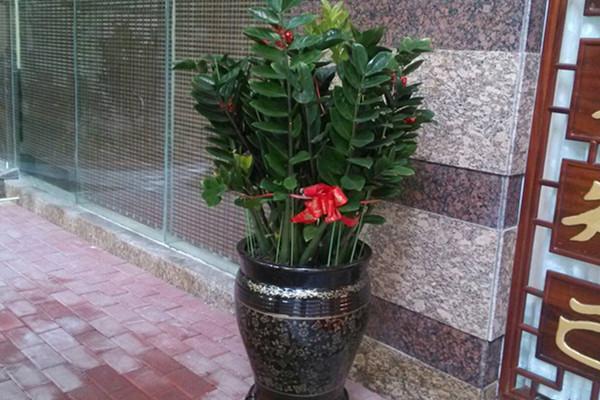
一.冻伤的原因:
温度不适宜
这种植物喜欢在温暖的气候中生长,最好是在20℃到32℃之间。而冬季温度较低,如果室内的温度远远不及5℃的话,它的植株会很容易受到冻害甚至会死亡。
光照太过猛烈
如果强光直接照射在叶面上,它的叶子很容易就会被烧伤。但是冬天如果把它放到屋子里面,又不给它充足的光照来补给生长所需,它就很容易被冻伤。
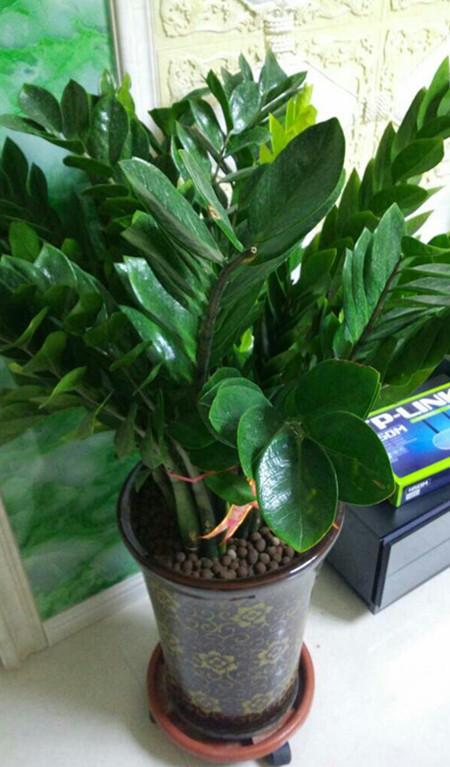
水分量不适当
这种植物喜欢湿润中偏干燥的成长环境,冬季如果浇了太多的水,盆里面的水分过多,在冬天这种温度低的环境下,会容易导致植株从根部开始腐化烂掉,甚至是整株死亡。
肥料太多
这种植物冬季不需要施肥,如果施肥,会很容易造成在低温的环境下伤害到植株的根部。
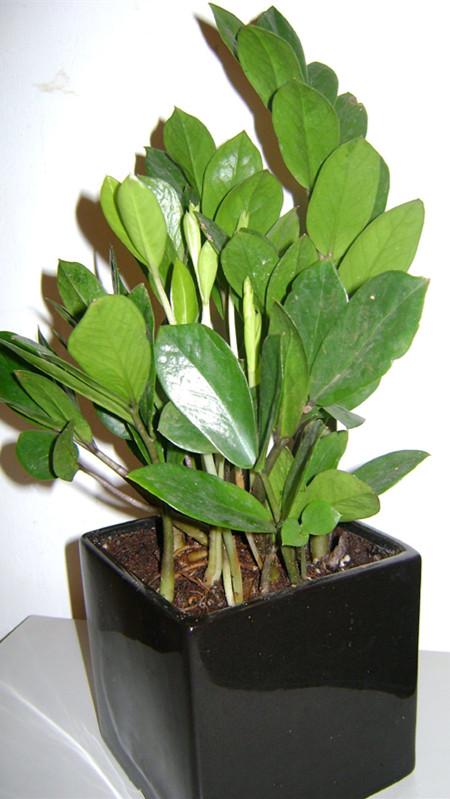
二.解决方法:
1、把它放在室内养殖,在度过冬天时,应该把它的生长环境的温度维持在8摄氏度到10摄氏度之间。
2、把它放置在室内后要给它补充阳光,满足它的光合作用所需。
3、不要浇过多的水,如果它被长时期地放在温度低于15℃的环境中,不要再给它浇水或者喷水。如果在这种环境中还给它浇水或者喷水,它就会一点点地腐烂死亡。
4、冬天不要给它施肥就好。
5、如果它的叶片已经像是被滚烫的开水烫过一样的话,要把它已经冻伤的叶片修剪掉,然后把它放在比较温暖的环境中再帮它换掉盆子。
6、如果已经腐烂倒下的话,要把它从盆里面拔出来,拿一把刀尖轻轻地刮掉已经烂掉的根部,刮到可以看出它有生命迹象为止。把它放到有阳光的地方晒上一个星期,再重新栽种到盆里,半个月过后再给它浇水。

0
0
文章
权问薇
2018年02月03日


君子兰冻一冻,春天开花100朵!
君子兰养4-5年,或者长到12片叶片,才可以开花。但有的花友,这两个条件都满足了,为什么还是不开花呢?有可能是因为养护温度太高,君子兰无法春化长出花箭!

君子兰促花措施:
1.适当的低温。
适当低温有利于君子兰抽花箭,所以,冬天君子兰的养护温度不要超过15度,超过15度不容易春化长花箭,这就是广东等地君子兰很少开花的原因。

2.营造大温差。
大温差有利于君子兰花箭,5-15度之间最佳,最好不要低于5度,低于5度君子兰容易冻伤。
3.增施磷钾肥。
君子兰春天开花需要大量养分,所以冬天要给它适当补充磷钾肥,大家可以在盆沿挖2个小洞,撒一点点骨粉。或浇水时,加点磷酸二氢钾!
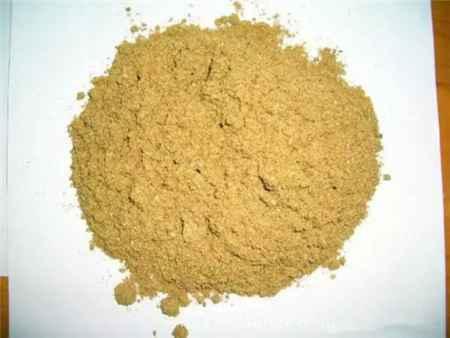
4.控制浇水。
君子兰在5-15度的低温环境下,需要控制浇水不然容易冻伤,大概1月浇1-2次即可,中午温度高的时候浇。

蝴蝶兰冻一下,花朵开成串!
快过年了,市场上的蝴蝶兰越来越多,开花后摆家里2-3个月都不谢,特别喜庆,那怎么让蝴蝶兰猛蹿花箭,开花多多呢?答案就是“折磨”它一下!

蝴蝶兰促花措施:
1.大温差折磨。
蝴蝶兰开花也需要一定的大温差刺激,晚上可以放冰箱冷藏,设置温度在8-10度左右,白天则拿出来放暖气房,温度20-25度左右,这样一天的总温差超过10度,持续6-8个星期,就能长出花箭了!

2.长花梗后提升温度。
长出花梗后,就把蝴蝶兰一直放在暖气房,保证温度22-30度之间,促进花梗继续生长,不需要再营造大温差!
3.增加光照时间。
蝴蝶兰长出花梗前后,都要放南阳台等光照充足的地方,使劲晒太阳,晒太阳越多,花梗越多,花朵也越多!

4.增施磷钾肥。
想要蝴蝶兰开花,开花前包括长出花梗时期,都要施磷钾肥,可以施复合肥,也可以施磷酸二氢钾,大概1个月2-3次即可,薄肥勤施,开花后不要施了。
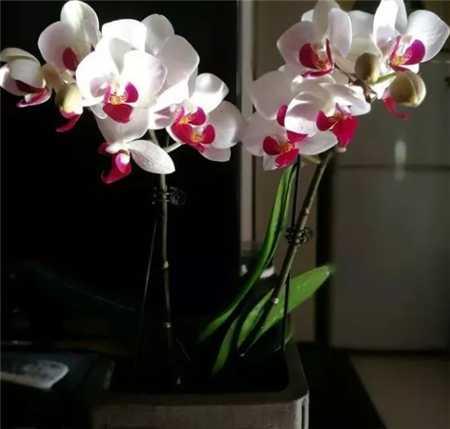
5.提高湿度。
蝴蝶兰喜湿,催花期间要保证较大的空气湿度,才有利于花梗生长,可以往蝴蝶兰叶片上多喷水,也可以在它周围放几个盛水的托盘增湿。

栀子花冻一冻,来年花朵压弯枝!
栀子在北方是很难养的,经常黄叶,而且很难养开花。但有时候我们不要它娇惯它,让它冬天挨挨冻,明年会开花更多哦!

栀子花促花措施:
1.适当低温使其休眠。
栀子花冬天最佳温度是0-12度,这个温度栀子花休眠而且不会冻伤,如果高于12度,则会发芽,消耗过多养分,导致明年开花少或者不开花。

2.控制浇水预防冻伤。
休眠期间的栀子花,新陈代谢缓慢吸收能力减弱,所以要控制浇水,以防积水烂根和冻伤,盆面发白特别干才能浇,大概1个月2次左右即可,中午浇。
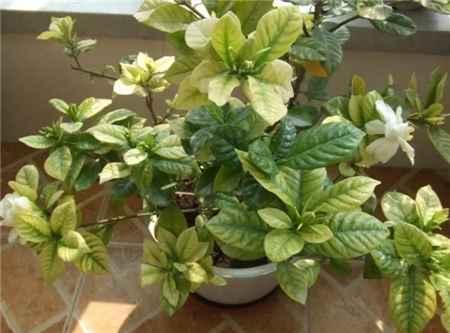
3.控制不要修剪储存养分。
栀子花休眠之前和休眠过程中,不要进行太多修剪活动,尽量保留较多的健康叶片,多晒太阳进行光合作用,积累足够多的养分利于越冬,清明节再重剪。

除了以上3种花,
像兰花、月季、茉莉等花卉,
冬天也需要一段时间的低温才能孕育花蕾,
大家不要一味得给花保温,
有时候适当的风雪会让它更坚强、更漂亮哦!
0
2
文章
权问薇
2018年02月02日


一、扦插
插条的制作
关于露珠杜鹃的繁殖,扦插用的是比较多的一种。每年五月的时候,天气温暖湿润,这时剪取健壮的杜娟老枝,顶部保留几片叶子,长度在5、6cm。注意除去下部叶片,这样就做好了扦插条。
发芽环境
露珠杜鹃适合长在肥沃,疏松的土壤中,温度大概在20至25度,避免直接接触阳光,定期洒水。

二、播种
人工授粉
自然条件下露珠杜鹃花结子少,这就需要我们进行人工帮忙花授粉提高种子产率。在杜鹃盛开时选择健壮的母本花朵,在温室条件下,去除雄蕊和多余的芽叶,等柱头出现粘液时,用笔蘸上花粉轻轻涂抹在柱头即可。注意笔不能太硬,最好是毛笔。
种子贮存
它们的种子无法长期保存,随着时间推移大量的种子将无法发芽。这里有个小知识介绍给大家,如果是常绿杜鹃,种子采完不就就应该播种,而落叶杜鹃的种子可以等到第二年春天再种。

土壤
选取疏松肥沃的土壤,挑出沙石,用40%福尔马林1:100稀释喷洒后晾干,目的是为了消毒。在盆底加入一层草木灰做肥料,再加上晾干的土壤,表面平整,稍微压实。即可播种。
播种后养护
播种后五六星期即可发芽,将部分小苗移除避免太密集。幼苗要用干草之类的盖上,不能被太阳直接晒到,也不能淋雨,不能施肥。小苗长到10公分以后才能。

三、用新长枝
该方法一般是对那些难以成活的名贵品种使用。用刀将嫩枝底部削出一个斜平面,制作成三厘米左右的接穗。砧木用毛鹃,将嫩枝接到上面。完成以后将其放在遮阳的阴棚里,用塑料薄膜盖住扎起来,这样可以保住水不流失,达到维持湿度的效果。
0
0
文章
Miss Chen
2018年02月01日

Description: This perennial plant is 2-5" (5-12 cm.) tall, eventually forming sprawling mats of cactus pads. An individual plant typically consists of 2-6 pads (modified fleshy stem-segments) that form either branched or unbranched chains (usually the former). These pads can become detached from each other easily, especially the uppermost and youngest pads. The pads are ascending to widely spreading. Individual pads are 1-2.5" (2.5-6 cm.) long, ½-1" (1.2-2.5 cm.) across, and slightly to moderately flattened; mature pads are ellipsoid, broadly ellipsoid, or obovoid in shape. Pad surfaces are medium green and glabrous; they often shrivel and become wrinkled during the dormant stage of winter, while remaining green. Scattered across the pads in diagonal rows are areoles (air pores) about 2-3 mm. across; they are initially white-woolly. The areoles contain inconspicuous glochids (fine spiny bristles) about 1-2 mm. long that are yellowish or brownish. In addition, clusters of 2-6 divergent spines develop from the areoles. These spines are ¼-1¼" (5-30 mm.) long, light gray or brown, straight, terete, and barbed at their tips. With age, some of the spines become detached from the pads. On young developing pads, scale-like leaves develop near the areoles that are 1-3 mm. long, green to reddish green, and lanceolate in shape; they are early-deciduous.
While most plants fail to bloom during a given year, usually a small minority of plants in a colony will produce 1-2 flowers each. Each flower is about 1½-2" (4-5 cm.) across when it is fully open, consisting of several rounded yellow tepals, numerous stamens, and a pistil with a single slender style. Sometimes the inner tepals are reddish or greenish at their bases. The filaments of the stamens are yellow or reddish brown, while their anthers are yellow. The style is whitish yellow with a cluster of 4-10 green stigmata at its tip. For a colony of plants, the blooming period occurs during mid-summer for about 1-2 weeks; each diurnal flower lasts only a single day. Sometimes there is a slight floral fragrance. Most flowers fail to set fruit. Among those that do, their fruits are ½-¾" (12-20 mm.) long and ovoid in shape. Immature fruits are green to reddish green, while mature fruits are tan to brown and bur-like in appearance. Like the pads, the fruits have areoles with glochids and barbed spines; the spines are more common toward the apex of each fruit. The interior of mature fruits is dry and seedy. These fruits are easily detached from their pads. Individual seeds are 4-6 mm. across, bone-colored to grayish brown, and hairless; they are rather chunky and irregular in shape. The root system is shallow and fibrous. This plant can reproduce vegetatively whenever detached pads have contact with the ground surface, as they willDistribution Map form new roots. This is the primary method of reproduction. It is not uncommon for little-disturbed plants to form sprawling colonies at favorable sites.
Cultivation: The preference is full sun, dry conditions, and open barren ground that is rocky, gravelly, or sandy. However, this cactus will adapt to ordinary garden soil if other plants are kept away from it. Under these conditions, it is not difficult to cultivate, however flowers and fruits are uncommonly produced in most geographical areas where this cactus occurs. This dwarf cactus is a good candidate for a sunny rock garden. It is the most winter-hardy cactus in North America.
Range & Habitat: The native Brittle Prickly Pear is found in only the NW corner of Illinois, where it is rare and state-listed as 'endangered.' Illinois lies along the eastern range-limit of this cactus; it is more common in areas further to the west, especially in the northern plains region of the United States. In Illinois, Brittle Prickly Pear occurs on a dry sand prairie of an abandoned army base that is in the process of being restored. Outside of the state, this cactus can be found in open grassy prairies, sandy hills, and rocky outcrops containing granite, limestone, or quartzite. In Illinois, this cactus is found in a higher quality natural area, while toward the center of its range, it sometimes occurs in disturbed areas (e.g., cattle pastures).
Faunal Associations: The nectar and pollen of the flowers attract primarily bees, including Halictid bees. Insects that feed destructively on Brittle Prickly Pear and other Opuntia spp. include the Coreid bug, Chelinidea vittiger, which sucks juices from the cactus pads and fruits; the stink bugs, Chlorochroa uhleri and Chlorochroa persimilis, which also suck juices from the cactus pads and fruits; larvae of the Syrphid fly, Copestylum vittatum, which bore into the cactus pads; and larvae of the Pyralid moths, Melitara dentata and Melitara prodenialis, which also bore into the cactus pads. The sharp spines and bristly glochids provide the cactus pads and fruits with some protection from browsing by vertebrate herbivores. Nonetheless, in some areas the Brittle Prickly Pear is eaten by the Plains Pocket Gopher, and its seeds are an important source of food for the Harris Ground Squirrel and many species of birds (Ribbens, 2007). Among cacti, the Brittle Prickly Pear is unusual in having individual pads and fruits that are designed to attach themselves to the fur of mammals, such as the American Bison; they also become attached to the clothing and skin of humans. By such means, new clonal plants and seeds can be transported across long distances.

Photographic Location: The wildflower garden of the webmaster in Urbana, Illinois.
Comments: In Illinois, Brittle Prickly Pear can be distinguished from other Opuntia spp. (Prickly Pears) by its small size and dry bur-like fruits. Like many other cacti, it produces large showy flowers that are short-lived. The detachable pads make this cactus difficult to handle while transplanting as they readily cling to fingers, hands, or gloves, thanks to its barbed spines. In particular, the inconspicuous glochids (fine sharp bristles of the areoles) can embed themselves underneath the surface of the skin and are difficult to remove. So its wise to exercise considerable care while handling this plant. Not only can the pads become detached by the movements of animals or people, even heavy rainfall, blowing snow, or a strong gust wind sometimes dislodge them. Each one of these detached pads has the potential to become another clonal plant, forming low mats of sprawling plants over time.
While most plants fail to bloom during a given year, usually a small minority of plants in a colony will produce 1-2 flowers each. Each flower is about 1½-2" (4-5 cm.) across when it is fully open, consisting of several rounded yellow tepals, numerous stamens, and a pistil with a single slender style. Sometimes the inner tepals are reddish or greenish at their bases. The filaments of the stamens are yellow or reddish brown, while their anthers are yellow. The style is whitish yellow with a cluster of 4-10 green stigmata at its tip. For a colony of plants, the blooming period occurs during mid-summer for about 1-2 weeks; each diurnal flower lasts only a single day. Sometimes there is a slight floral fragrance. Most flowers fail to set fruit. Among those that do, their fruits are ½-¾" (12-20 mm.) long and ovoid in shape. Immature fruits are green to reddish green, while mature fruits are tan to brown and bur-like in appearance. Like the pads, the fruits have areoles with glochids and barbed spines; the spines are more common toward the apex of each fruit. The interior of mature fruits is dry and seedy. These fruits are easily detached from their pads. Individual seeds are 4-6 mm. across, bone-colored to grayish brown, and hairless; they are rather chunky and irregular in shape. The root system is shallow and fibrous. This plant can reproduce vegetatively whenever detached pads have contact with the ground surface, as they willDistribution Map form new roots. This is the primary method of reproduction. It is not uncommon for little-disturbed plants to form sprawling colonies at favorable sites.
Cultivation: The preference is full sun, dry conditions, and open barren ground that is rocky, gravelly, or sandy. However, this cactus will adapt to ordinary garden soil if other plants are kept away from it. Under these conditions, it is not difficult to cultivate, however flowers and fruits are uncommonly produced in most geographical areas where this cactus occurs. This dwarf cactus is a good candidate for a sunny rock garden. It is the most winter-hardy cactus in North America.
Range & Habitat: The native Brittle Prickly Pear is found in only the NW corner of Illinois, where it is rare and state-listed as 'endangered.' Illinois lies along the eastern range-limit of this cactus; it is more common in areas further to the west, especially in the northern plains region of the United States. In Illinois, Brittle Prickly Pear occurs on a dry sand prairie of an abandoned army base that is in the process of being restored. Outside of the state, this cactus can be found in open grassy prairies, sandy hills, and rocky outcrops containing granite, limestone, or quartzite. In Illinois, this cactus is found in a higher quality natural area, while toward the center of its range, it sometimes occurs in disturbed areas (e.g., cattle pastures).
Faunal Associations: The nectar and pollen of the flowers attract primarily bees, including Halictid bees. Insects that feed destructively on Brittle Prickly Pear and other Opuntia spp. include the Coreid bug, Chelinidea vittiger, which sucks juices from the cactus pads and fruits; the stink bugs, Chlorochroa uhleri and Chlorochroa persimilis, which also suck juices from the cactus pads and fruits; larvae of the Syrphid fly, Copestylum vittatum, which bore into the cactus pads; and larvae of the Pyralid moths, Melitara dentata and Melitara prodenialis, which also bore into the cactus pads. The sharp spines and bristly glochids provide the cactus pads and fruits with some protection from browsing by vertebrate herbivores. Nonetheless, in some areas the Brittle Prickly Pear is eaten by the Plains Pocket Gopher, and its seeds are an important source of food for the Harris Ground Squirrel and many species of birds (Ribbens, 2007). Among cacti, the Brittle Prickly Pear is unusual in having individual pads and fruits that are designed to attach themselves to the fur of mammals, such as the American Bison; they also become attached to the clothing and skin of humans. By such means, new clonal plants and seeds can be transported across long distances.

Photographic Location: The wildflower garden of the webmaster in Urbana, Illinois.
Comments: In Illinois, Brittle Prickly Pear can be distinguished from other Opuntia spp. (Prickly Pears) by its small size and dry bur-like fruits. Like many other cacti, it produces large showy flowers that are short-lived. The detachable pads make this cactus difficult to handle while transplanting as they readily cling to fingers, hands, or gloves, thanks to its barbed spines. In particular, the inconspicuous glochids (fine sharp bristles of the areoles) can embed themselves underneath the surface of the skin and are difficult to remove. So its wise to exercise considerable care while handling this plant. Not only can the pads become detached by the movements of animals or people, even heavy rainfall, blowing snow, or a strong gust wind sometimes dislodge them. Each one of these detached pads has the potential to become another clonal plant, forming low mats of sprawling plants over time.
0
0
文章
Miss Chen
2018年02月01日

Description: This perennial plant is 2-5' tall and unbranched, except near the inflorescence. The central stem is covered with fine white hairs. The basal leaves are up to 10" long and 5" wide, while much smaller leaves alternate upward along the central stem. These leaves are light green and pubescent; their margins are smooth or slightly serrated. They are variably shaped, appearing lanceolate, oblanceolate, oblong, or oval, but always with blunt tips. Initially, the leaves have a soft floppy texture, but they become more stiff later in the year. The basal leaves often persist through the winter and are semi-evergreen. At the apex of the central stem is a corymb of small yellow flowers. This inflorescence is about 2-4" across, while each flower is ¼–½" across. The upper side stems also produce corymbs of these flowers, which are more or less all bunched together. There is a mild floral fragrance. The blooming period occurs from late summer to fall, and lasts about a month. The achenes have small tufts of white or light brown hair, and are distributed by the wind. This plant has deep fibrous roots, and it has a tendency to form offsets.
Cultivation: The preference is full sun and moist to slightly dry conditions. This plant is not particular about soil, which can consist of loam, clay-loam, or gravelly material. There is a tendency to flop over during bloom if it is spoiled by fertile soil or too much water. Powdery mildew sometimes attacks the leaves. Drought resistance is good; some of the lower leaves may wither away in response. This plant is easy to grow.
Range & Habitat: The native Stiff Goldenrod occurs in most counties of Illinois and is fairly common, but it is rare or absent in parts of southern Illinois (see Distribution Map). Habitats include moist to slightly dry black soil prairies, clay prairies, savannas, thickets, limestone glades, abandoned fields, roadsides, and open areas along railroads, particularly where prairie remnants occur.

Faunal Associations: The flowers attract many kinds of insects, including long-tongued bees, short-tongued bees, wasps, flies, butterflies, and beetles. Monarch butterflies are especially attracted to the flowers. The caterpillars of several species of moths feed on various parts of this and other goldenrods (see Moth Table). Other insects that feed on this plant are Disonycta latifrons (Flea Beetle sp.), Microrhapala vittata (Leafminer Beetle sp.), Hesperotattix viridii (Spur-Throated Grasshopper sp.), and Corythucha marmorata (Lace Bug sp.). The Greater Prairie Chicken and Eastern Goldfinch eat the seeds to a limited extent. Many mammalian herbivores eat this plant, particularly during the early stages of growth and development. This includes the White-Tailed Deer, Cottontail Rabbit, Muskrats, and livestock. The latter tend to leave this plant alone when there are other sources of food available.

Photographic Location: The photographs were taken at Meadowbrook Park in Urbana, Illinois, and the wildflower garden of the webmaster in the same city.
Comments: This is one of the more attractive goldenrods. It has a unique appearance and is easy to distinguish from other goldenrods: 1) the foliage is quite pubescent and light green, with a felty appearance; 2) the basal leaves are quite large, assuming that they haven't withered away; 3) the inflorescence consists of erect bunches of flowers; it does not radiate outward, nor form a narrow wand; 4) the individual flowers are slightly larger than those of other goldenrods. Along with a few other goldenrod species, such as Riddell's Goldenrod and Ohio Goldenrod, Stiff Goldenrod has been recently reassigned from the Solidago genus to the Oligoneuron genus. Formerly, it was referred to as Solidago rigida.
Cultivation: The preference is full sun and moist to slightly dry conditions. This plant is not particular about soil, which can consist of loam, clay-loam, or gravelly material. There is a tendency to flop over during bloom if it is spoiled by fertile soil or too much water. Powdery mildew sometimes attacks the leaves. Drought resistance is good; some of the lower leaves may wither away in response. This plant is easy to grow.
Range & Habitat: The native Stiff Goldenrod occurs in most counties of Illinois and is fairly common, but it is rare or absent in parts of southern Illinois (see Distribution Map). Habitats include moist to slightly dry black soil prairies, clay prairies, savannas, thickets, limestone glades, abandoned fields, roadsides, and open areas along railroads, particularly where prairie remnants occur.

Faunal Associations: The flowers attract many kinds of insects, including long-tongued bees, short-tongued bees, wasps, flies, butterflies, and beetles. Monarch butterflies are especially attracted to the flowers. The caterpillars of several species of moths feed on various parts of this and other goldenrods (see Moth Table). Other insects that feed on this plant are Disonycta latifrons (Flea Beetle sp.), Microrhapala vittata (Leafminer Beetle sp.), Hesperotattix viridii (Spur-Throated Grasshopper sp.), and Corythucha marmorata (Lace Bug sp.). The Greater Prairie Chicken and Eastern Goldfinch eat the seeds to a limited extent. Many mammalian herbivores eat this plant, particularly during the early stages of growth and development. This includes the White-Tailed Deer, Cottontail Rabbit, Muskrats, and livestock. The latter tend to leave this plant alone when there are other sources of food available.

Photographic Location: The photographs were taken at Meadowbrook Park in Urbana, Illinois, and the wildflower garden of the webmaster in the same city.
Comments: This is one of the more attractive goldenrods. It has a unique appearance and is easy to distinguish from other goldenrods: 1) the foliage is quite pubescent and light green, with a felty appearance; 2) the basal leaves are quite large, assuming that they haven't withered away; 3) the inflorescence consists of erect bunches of flowers; it does not radiate outward, nor form a narrow wand; 4) the individual flowers are slightly larger than those of other goldenrods. Along with a few other goldenrod species, such as Riddell's Goldenrod and Ohio Goldenrod, Stiff Goldenrod has been recently reassigned from the Solidago genus to the Oligoneuron genus. Formerly, it was referred to as Solidago rigida.
0
0
文章
Miss Chen
2018年01月30日

Description: This herbaceous perennial plant consists of a loose rosette of 2-5 ascending basal leaves, from which a flowering stalk develops. The basal leaves are 4-12" long and 2-5 mm. across; they are medium green, hairless, linear in shape, and somewhat truncate at their tips. Leaf venation is parallel. The flowering stalk is 6-16" tall and more or less erect; it is medium green, hairless, terete (circular in cross-section), and hollow. This stalk terminates in a simple umbel of flowers about ¾–1¼" across, consisting of 4-8 flowers and their pedicels. The umbel has a short obconic shape, and it is more or less flat-headed. Individual flowers are about ½" long and similarly across. Each flower has 6 tepals that are primarily white, 6 stamens, and a superior ovary with a single style. The interior base of the tepals is usually yellow, while the exterior of each tepal has a longitudinal vein that is often reddish or greenish. The tepals are elliptic or lanceolate-oblong in shape. The anthers of the stamens are bright yellow, while their filaments are white, pale yellow, or pale green. The pedicels are medium green, hairless, slender, and straight to slightly incurved; they are about ½–¾" long during the blooming period, but become up to 1½" long afterwards. At the base of the umbel of flowers, there is a pair of membranous bracts that are about ½" in length and lanceolate in shape; they eventually wither away. The blooming period occurs from mid-spring to late spring, while a second blooming period sometimes occurs during the autumn. There is no noticeable floral scent. Afterwards, the flowers are replaced by seed capsules. These capsules are 6-8 mm. long, globoid-obovoid and slightly 3-lobed in shape, and hairless. Immature capsules are green, while mature capsules become light tan, dividing into 3 parts to release their seeds. There are about 4-6 black seeds for each lobe of a divided capsule. The root system consists of a bulb about ½" across with fibrous roots below. The exterior of the bulb is brown and membranous, while the interior is white and fleshy. Both the foliage and bulb of this plant lack a noticeable garlic or onion aroma. Occasionally, basal offsets occur, creating clumps of clonal plants.
Cultivation: The preference is an open area with full or partial sunlight, moist to dry-mesic conditions, and a slightly acidic to alkaline soil containing rocky material or sand.
Range & Habitat: The native False Garlic (Nothoscordum bivalve) occurs occasionally in southern Illinois and rarely in central Illinois, while in the northern section of the state it is absent (see Distribution Map). This plant is found primarily in the southeastern United States and Southern Plains region of the country. Illinois lies along its northern range-limit. Habitats include upland prairies, hill prairies, sandy or silty riverbottom prairies, rocky glades (including limestone, dolomite, and chert glades), open upland woodlands, upland savannas, and thinly wooded bluffs. In Illinois, False Garlic is found in higher quality natural areas, where it probably benefits from occasional wildfires and other kinds of disturbance if it reduces competition from woody plants.
Faunal Associations: The nectar of the flowers attracts cuckoo bees (Nomada spp.), green metallic bees (Augochlorella spp.) and other Halictid bees, Andrenid bees (Andrena spp.), bee flies, and small to medium-sized butterflies. One of the Andrenid bees, Andrena nothoscordi, is a specialist pollinator (oligolege or monolege) of False Garlic (Nothoscordum bivalve). This bee and other small bees also collect pollen from the flowers. Syrphid flies may visit the flowers occasionally to feed on the pollen, but they are less effective at cross-pollination. White-tailed Deer have been observed to feed on the foliage of False Garlic in areas of south Texas with loam or clay-loam soil (Chamrad & Box, 1968), although some authors consider this plant to be poisonous (Pammel, 1911). There is also sophisticated archaeological evidence that prehistoric people, thousands of years ago, cooked the bulbs of this plant in rock ovens in east Texas (Short et al., 2015).
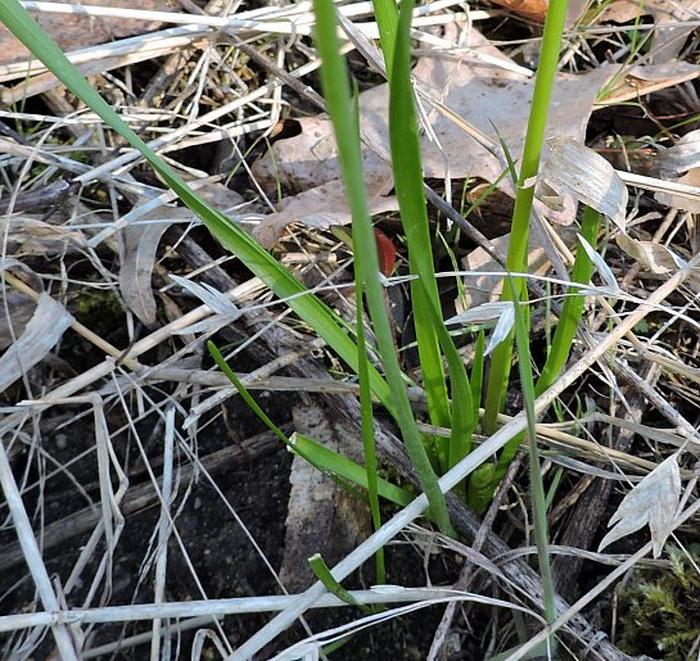
Photographic Location: A prairie at a nature preserve in Fayette County, Illinois. The photographs were taken by Keith & Patty Horn (Copyright © 2016).
Comments: False Garlic (Nothoscordum bivalve) resembles several other species in the Lily family (Liliaceae), especially native Allium spp. (Wild Garlic, etc.). This plant can be distinguished from this latter group of species by the lack of a noticeable garlic or onion aroma from its foliage and bulbs when they are rubbed or crushed. In addition, False Garlic never produces aerial bulblets in its inflorescence. Unlike many similar species in the Lily family, False Garlic has flowers with a yellow base and its basal leaves often have tips that are more truncate than rounded or pointed. Recently, the Lily family has been divided into several families of plants as a result of DNA analysis. Another common name of Nothoscordum bivalve is Crow Poison. The latter name suggests that this plant is poisonous, but the available evidence on this matter is contradictory.
Cultivation: The preference is an open area with full or partial sunlight, moist to dry-mesic conditions, and a slightly acidic to alkaline soil containing rocky material or sand.
Range & Habitat: The native False Garlic (Nothoscordum bivalve) occurs occasionally in southern Illinois and rarely in central Illinois, while in the northern section of the state it is absent (see Distribution Map). This plant is found primarily in the southeastern United States and Southern Plains region of the country. Illinois lies along its northern range-limit. Habitats include upland prairies, hill prairies, sandy or silty riverbottom prairies, rocky glades (including limestone, dolomite, and chert glades), open upland woodlands, upland savannas, and thinly wooded bluffs. In Illinois, False Garlic is found in higher quality natural areas, where it probably benefits from occasional wildfires and other kinds of disturbance if it reduces competition from woody plants.
Faunal Associations: The nectar of the flowers attracts cuckoo bees (Nomada spp.), green metallic bees (Augochlorella spp.) and other Halictid bees, Andrenid bees (Andrena spp.), bee flies, and small to medium-sized butterflies. One of the Andrenid bees, Andrena nothoscordi, is a specialist pollinator (oligolege or monolege) of False Garlic (Nothoscordum bivalve). This bee and other small bees also collect pollen from the flowers. Syrphid flies may visit the flowers occasionally to feed on the pollen, but they are less effective at cross-pollination. White-tailed Deer have been observed to feed on the foliage of False Garlic in areas of south Texas with loam or clay-loam soil (Chamrad & Box, 1968), although some authors consider this plant to be poisonous (Pammel, 1911). There is also sophisticated archaeological evidence that prehistoric people, thousands of years ago, cooked the bulbs of this plant in rock ovens in east Texas (Short et al., 2015).

Photographic Location: A prairie at a nature preserve in Fayette County, Illinois. The photographs were taken by Keith & Patty Horn (Copyright © 2016).
Comments: False Garlic (Nothoscordum bivalve) resembles several other species in the Lily family (Liliaceae), especially native Allium spp. (Wild Garlic, etc.). This plant can be distinguished from this latter group of species by the lack of a noticeable garlic or onion aroma from its foliage and bulbs when they are rubbed or crushed. In addition, False Garlic never produces aerial bulblets in its inflorescence. Unlike many similar species in the Lily family, False Garlic has flowers with a yellow base and its basal leaves often have tips that are more truncate than rounded or pointed. Recently, the Lily family has been divided into several families of plants as a result of DNA analysis. Another common name of Nothoscordum bivalve is Crow Poison. The latter name suggests that this plant is poisonous, but the available evidence on this matter is contradictory.
0
0





